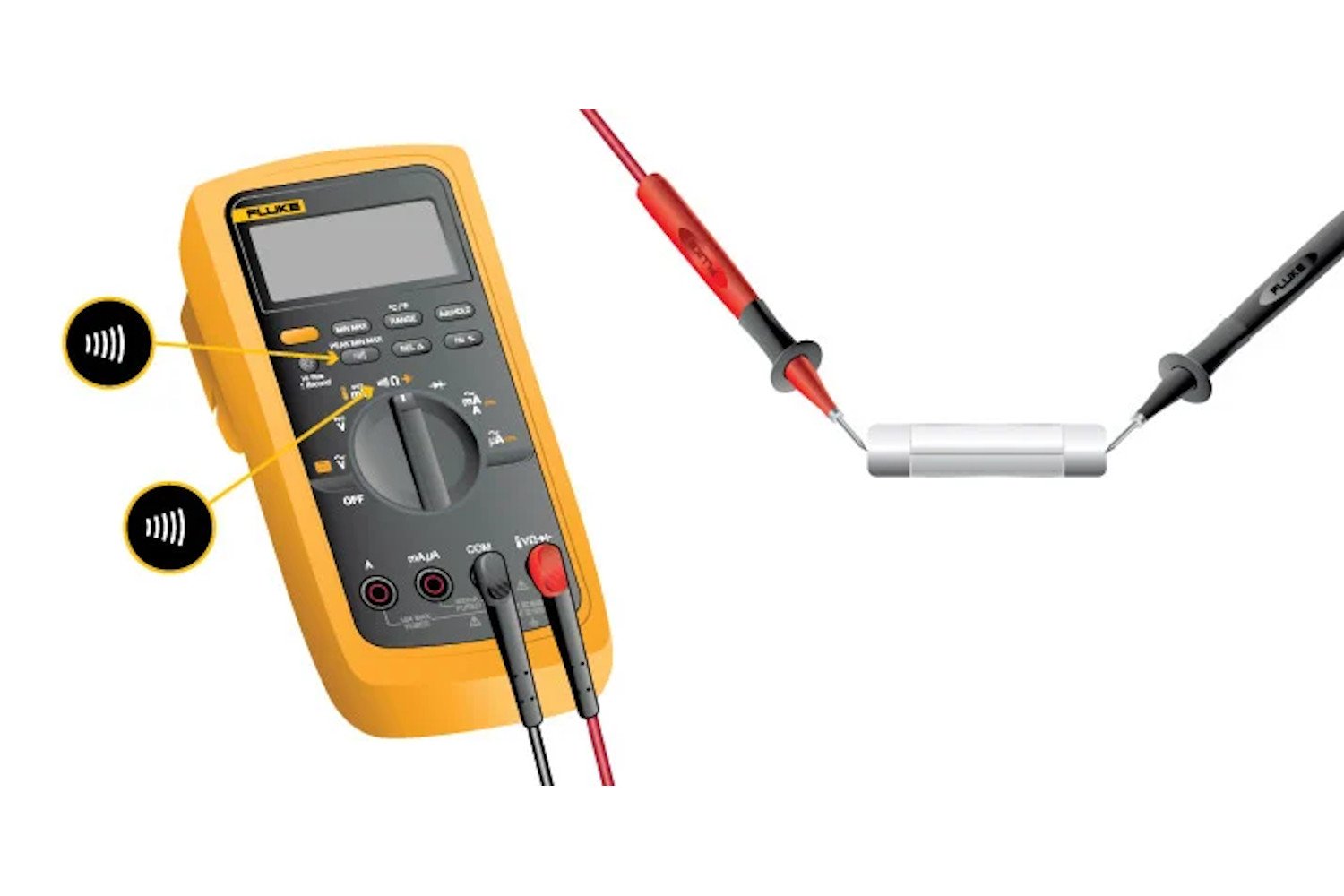
If the fuse is removed from the circuit. If the fuse is removed from the circuit.

Switch off the power of the equipment remove the casing and you will see a fuse usually located in the Ac input area or power supply section.
How to test a fuse with an ohmmeter. How to Test a Fuse with an Ohmmeter. Set your ohmmeter to the lowest scale on the resistance setting. Usually it will have Ω Greek letter omega for resistance.
When testing a fuse touch the end of each ohmmeter cable to the opposite ends of the fuse. A reading between 0 and 2 indicates continuitythe circuit is goodcomplete. How To Test A Fuse With A Multimeter Voltmeter Ohmmeter for Beginners Continuity test Mastech MS8268In this YouTube video tutorial I teach you how to.
I show how to test a cartridge fuse with an ohmmeter. How to set up the ohmmeter and how to use the leads. This video is part of the heating and cooling ser.
You can test a fuse using either a digital volt-ohmmeter or an analog volt-ohmmeter. Plug the red test lead into the red jack marked VoltsOhms on the front of the meter. Turn off the power and remove the fuse to be tested from the circuit.
Never test a fuse for continuity while it is still connected to the circuit that it is used to protect. There is no polarity so you can use any lead for either fuse cap. Ensure to make good contact by touching a clean metal surface on each cap.
Whilst the leads are firmly connected to the fuse look at the reading displayed on the multimeter. If you wish to test a fuse still located in a circuit. If your multimeter does not have a continuity mode you can check the fuse also with the ohmmmeter of the multimeter.
Place the multimeter on the ohmmeter setting and place the probe leads across the 2 ends of the fuse. If the reading you get is very low a few ohms then the fuse is. Answer 1 of 7.
If the fuse is removed from the circuit. Select OHMs function on the multimeter. Short the leads together and observe the reading on the meter.
It should read 3 ohms or less. Place the leads across the fuse and observe the reading. A good fuse will read less than 20.
At the end of the fuse touch the probes of your Ohmmeter. Check on the readings on your Ohmmeter and determine whether the fuse is faulty or in a good state. When the needle of your Ohmmeter moves to O then your fuse is working accordingly.
Otherwise you will have to replace it with a new one. How to Test a Ceramic Fuse. Turn off the power supply to the appliance or other electrical device if the device is hard-wired.
Set an ohmmeter or multimeter dial to zero. Touch one end of the fuse terminal with the black test probe and the other end of the fuse terminal with the red test probe. Read the ohmmeter display.
The number shown should be close to the one you get when testing the fuse. Stick a lead on each side of the fuse. Either lead can go on either side.
Look at the display to see if your fuse is in optimal condition or not. How to check car fuses without pulling them out - Testing fuses with a Multimeter - YouTube. How to check car fuses without pulling them out - Testing fuses with a Multimeter.
There are several options for how to test a thermal fuse without a multimeter. You can use the ohmmeter to check the resistance. You can bypass the fuse replace the fuse check etc.
Knowing this skill will save you from unnecessary expense on the simple requirement of testing and changing the fuse. In case your multimeter doesnt have a continuity mode you can test the fuse additionally with the ohmmmeter of the multimeter. Place the multimeter on the ohmmeter setting and place the probe leads throughout the two ends of the fuse.
If the studying you get could be very low a few ohms then the fuse is steady and thus good. Answer 1 of 3. You need some way to determine whether the fuse has electrical conductivity through it or not.
That requires some sort of power source and some way to detect that current is flowing. Then you include the fuse within the circuit and see if current continues to flow. A fuse is a type of current limiting device that introduces zero resistance to the circuit so you will need to set your analog voltmeter to the lowest resistance scale possible with your meter.
On most analog meters this will most likely be a 200 Ohm scale. To use an ohmmeter start by disconnecting all power to the circuit that youre testing. Next turn the dial in the center of your ohmmeter to change the scale of the reading from tens to hundreds.
Touch the terminal of your Ohmmeter to the thermal fuse and wait a few seconds for the reading to appear. Write down your readings on a clean piece of paper. Calculate the reading if you are using an analog Ohmmeter.
Here is the part on how to test a fuse. Switch off the power of the equipment remove the casing and you will see a fuse usually located in the Ac input area or power supply section. Measure the fuse with a either an analog or a digital multimeter.
If you use an analog meter then select the lowest ohms range which is the x1 ohms.